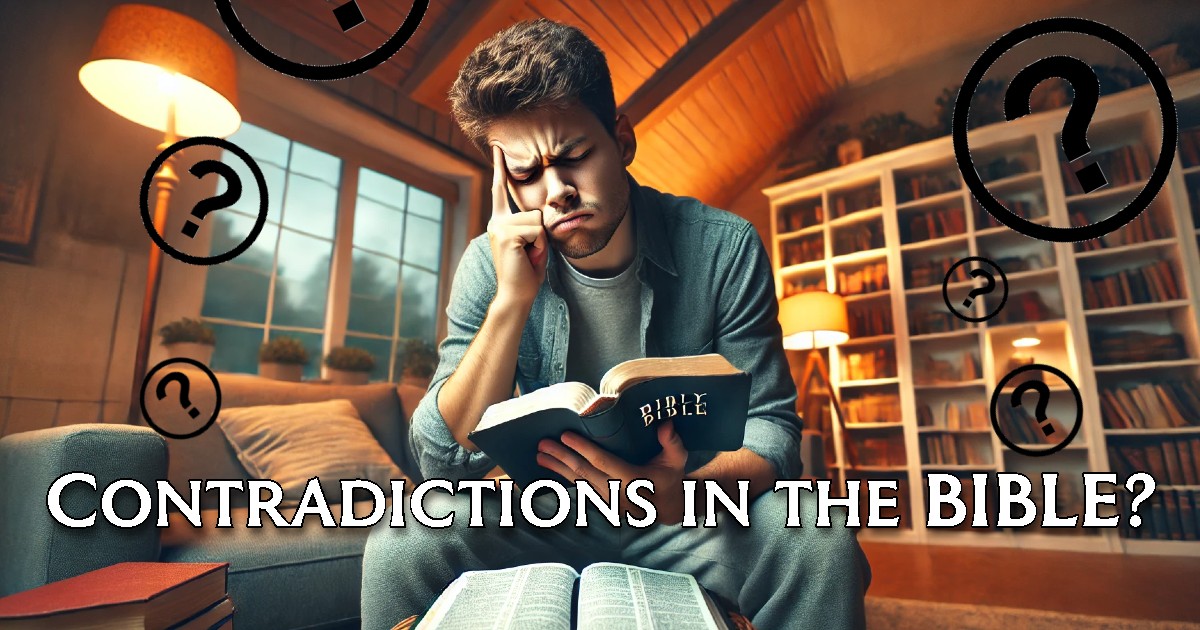The Bible, revered by billions as the infallible word of God, has been the cornerstone of faith, morality, and civilization for millennia. Yet, within its sacred pages lie contradictions that have puzzled believers and skeptics alike. This leads us to a provocative question: Why does the Bible contain contradictions?
Unveiling the Roots
To explore this question, we must step beyond traditional theological interpretations and delve into secular investigations of the earliest biblical texts. Scholars in the fields of textual criticism, archaeology, and ancient history provide valuable insights that help unravel this complex issue.
Multiple Sources, Divergent Voices
One of the most compelling explanations arises from the Documentary Hypothesis, which suggests that the Pentateuch (the first five books of the Bible) was not authored by a single individual (traditionally Moses) but is a compilation of texts from multiple sources. These sources, identified as J (Yahwist), E (Elohist), D (Deuteronomist), and P (Priestly), were written by different authors over several centuries.
For instance, consider the two creation accounts in Genesis. Genesis 1 describes creation over six days with a structured, cosmic focus, while Genesis 2 presents a more anthropocentric narrative, with Adam formed before plants and animals. These inconsistencies reflect the merging of distinct traditions with unique theological emphases.
Translation and Transmission Errors
Another source of contradictions lies in the process of transmission and translation. The Bible has been copied by hand thousands of times, across different languages—Hebrew, Aramaic, Greek, Latin, and more. Each transcription introduced potential for human error.
The Dead Sea Scrolls, discovered in the 1940s, provide critical evidence of textual variations. For example, the book of Isaiah in the Dead Sea Scrolls differs in several places from the Masoretic Text, which forms the basis of most modern Old Testament translations. These discrepancies suggest that what we consider “biblical truth” has evolved over time through countless scribes’ hands.
The Influence of Non-Canonical Texts
Exploring non-canonical sources, such as the Gospel of Thomas, the Book of Enoch, and other apocryphal writings, reveals theological diversity in early Christianity and Judaism. These texts often present alternative teachings and narratives about biblical figures, indicating that early believers grappled with differing views about faith and doctrine.
For example, the Gospel of Thomas portrays Jesus’ teachings with a Gnostic flavor, emphasizing self-knowledge and spiritual enlightenment, contrasting sharply with the synoptic gospels’ focus on salvation through faith in Christ. This diversity reflects the dynamic and often contentious development of early Christian theology.
4. Historical and Cultural Contexts
Many contradictions arise when biblical texts are read without considering their historical and cultural contexts. Laws, customs, and societal norms evolved over the centuries, and biblical authors often wrote to address specific issues pertinent to their time.
Consider the differing views on violence and warfare: while the Old Testament often depicts God commanding brutal conquests (e.g., the Book of Joshua), the New Testament promotes messages of peace and turning the other cheek. These contradictions can be understood as reflections of changing social, political, and religious landscapes.
Editorial Redactions and Theological Agendas
Finally, editorial redactions played a significant role in shaping the Bible. Early compilers and church leaders made deliberate choices about which books to include, exclude, or modify to support emerging orthodox doctrines.
The Council of Nicaea (325 CE) and subsequent church councils influenced the canonization process, sidelining texts that did not align with the dominant theological views. This editorial process sometimes resulted in contradictions when conflicting narratives were preserved side by side, rather than harmonized.
A Human Book with Divine Aspirations
The contradictions in the Bible are not flaws to be dismissed but windows into its rich, complex history. They reveal a tapestry woven from diverse cultures, theologies, and historical contexts. Understanding these contradictions through secular investigation does not diminish the Bible’s value; instead, it highlights its role as a dynamic document shaped by human hands striving to understand the divine.
Sources
- The Dead Sea Scrolls – Discovered in Qumran, providing variant biblical manuscripts.
- The Documentary Hypothesis – Julius Wellhausen, Prolegomena to the History of Israel (1878).
- The Gospel of Thomas – Part of the Nag Hammadi Library, discovered in Egypt in 1945.
- The Book of Enoch – Ancient Jewish apocalyptic text, influential in early Christian thought.
- Bart D. Ehrman, Misquoting Jesus: The Story Behind Who Changed the Bible and Why (2005).
- Elaine Pagels, The Gnostic Gospels (1979).
By examining these secular perspectives and ancient manuscripts, we gain a fuller understanding of why the Bible contains contradictions—not as flaws, but as echoes of humanity’s quest to understand the divine.

